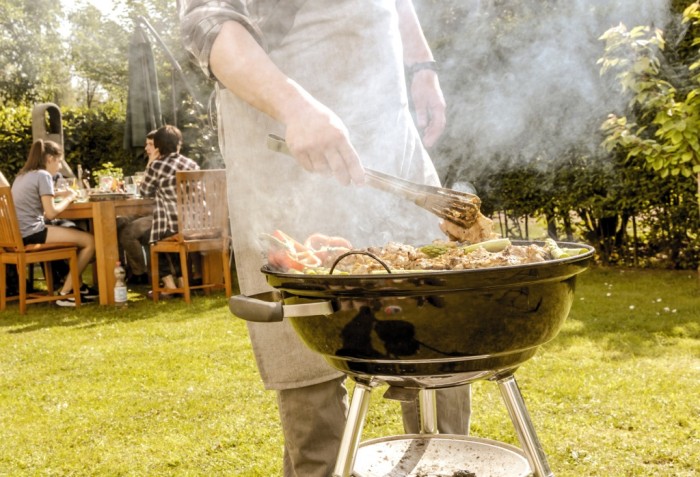Did you know that infrared heat and UV light contribute to the success of your barbecue?

Infrared and UV light have a significant part in the process of filling the barbecue sauce safely and without germs into the bottles.
Infrared heat protects glass bottles from breaking
If the temperature difference between liquid and glass is greater than 42°C when filling the bottles, there is a risk of heat shock which causes the glass to crack. To keep this temperature difference below the critical level, the empty bottles were rinsed with hot water, then preheated and dried in a steam oven before filling.
This process was very energy-intensive due to the water and the steam, and the steam oven could not be switched off quickly enough during a belt stop. The infrared oven, which is now used to heat the bottles, is more energy-efficient. By means of a PID controller within the infrared oven, it is ensured that the bottles have the correct temperature for filling.
Carbon infrared emitters (CIR®) emit radiation in the medium wavelength and are suitable for this process, since glass absorbs particularly well in this area. In addition, they react so quickly that they can be controlled easily and an overheating of the bottles in the event of a belt stop is avoided.
Ketchup maker goes for clean production air using efficient UV light
The recipes for barbecue sauces or ketchup usually include sugar, tomato paste, vinegar and salt, as well as condiments. This makes the product tasty. However, not only humans but also moulds, yeasts and viruses find that mixture lovely. They present a problem in the production process as they are naturally present in the air, settle down on the intermediate product before it is packaged and make it perish.
In cooperation with Heraeus experts, Wiso Feinkost GmbH, a producer of more than 350 tons a month of condiment sauces for 38 well-known labels, has found a fast and cost-efficient solution to this problem. The room air is filtered and disinfected with UV light, so that the product will be non-perishable even without adding preservatives.
“In the end, you want a solution that reliably and lastingly disinfects the air”, says managing director Alex Wiegand. A cost-efficient and pragmatic solution was found in an advisory meeting wit hthe Heraeus UV experts. The precisely calculated number of ozone-free UV lamps was installed in a commercially available, washable HEPA filter. The efficient method is quite simple:
The viruses and mould spores have different sizes and properties. While mould spores are relatively large and can be caught by the filter, viruses are too small to be retained. Therefore, they get inside the filter where they are inactivated by the UV light. The mould spores already caught can be exposed to the radiation for a longer time. That way, they are inactivated with little expenditure of energy.
Find out more about infrared heating processes in the glass industry and UV air disinfection on our special pages.
Heraeus Noblelight GmbH
Heraeusstr. 12-14
D-63450 Hanau
Phone +49 6181 35 8539
Fax +49 6181 35 16 8539
E-Mail: hng-info@heraeus.com
Media Contact
All latest news from the category: Power and Electrical Engineering
This topic covers issues related to energy generation, conversion, transportation and consumption and how the industry is addressing the challenge of energy efficiency in general.
innovations-report provides in-depth and informative reports and articles on subjects ranging from wind energy, fuel cell technology, solar energy, geothermal energy, petroleum, gas, nuclear engineering, alternative energy and energy efficiency to fusion, hydrogen and superconductor technologies.
Newest articles

Properties of new materials for microchips
… can now be measured well. Reseachers of Delft University of Technology demonstrated measuring performance properties of ultrathin silicon membranes. Making ever smaller and more powerful chips requires new ultrathin…

Floating solar’s potential
… to support sustainable development by addressing climate, water, and energy goals holistically. A new study published this week in Nature Energy raises the potential for floating solar photovoltaics (FPV)…

Skyrmions move at record speeds
… a step towards the computing of the future. An international research team led by scientists from the CNRS1 has discovered that the magnetic nanobubbles2 known as skyrmions can be…





















